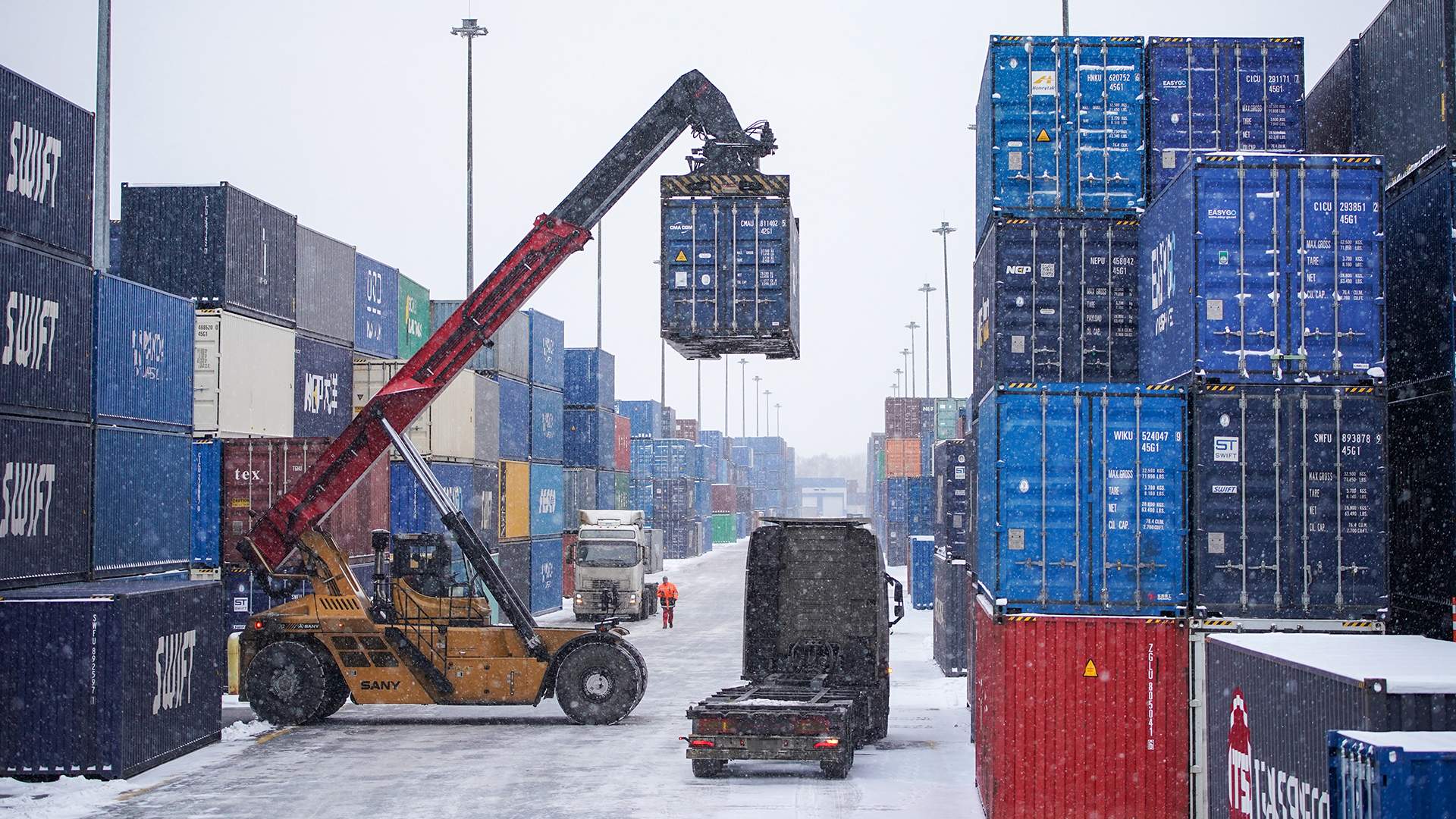Eastern Time: How Russia's foreign trade turnover will change in 2024

The past year was marked by changes in Russia's foreign trade turnover. Sanctions and geopolitical instability forced the economy to adapt to completely new realities. Despite these challenges, the volume of exports showed growth, increasing by 0.5% to $278 billion. The focus of Russian suppliers was Asia, Africa and CIS countries. What was the structure of exports and imports in 2024 - in the material of Izvestia.
How exports have changed
The total volume of exports in value terms, according to the Federal Customs Service, increased by 0.5% in 2024 and amounted to $278 billion, points out Mikhail Khachaturyan, PhD in Economics, Associate Professor at the Department of Strategic and Innovative Development of Finance University. The structure of supplies has undergone significant changes - the leading positions in terms of exports in value terms last year were taken by Asian countries ($209.2 billion).
According to the expert, the second place was taken by the European Union. The volume of exports in its case, despite sanctions, restrictions in settlements and other negative trends, amounted to $43.8 bln. The third place was occupied by African countries with a total export volume of $16.4 bln.
Reorientation to the markets of Asia, the Middle East and CIS countries has become the main feature of exports in 2024, according to Lidia Roy, head of the Creative Industries Laboratory at the Skolkovo School of Management in Moscow. This trend is explained by new logistical factors and economic circumstances. Sanctions, in particular, caused an increase in logistics costs and restricted financial transactions with foreign partners. As a result, companies started to strengthen domestic production capacities and look for new export destinations.
- The Chinese market became attractive due to the growth of the middle class, and the Middle East showed a high demand for unique goods," the Izvestia interlocutor specifies.
Russian companies, in her opinion, are actively adapting their products and marketing strategies to the specifics of these markets. Such changes include localization of packaging, design, marketing materials, as well as the use of digital tools.
Where the RF imported from
In 2024, the trend towards the logistics of goods from Southeast Asian countries has intensified, notes Dmitry Arzhanykh, co-founder of the SLC group of companies. China was the undisputed leader. The volume of imports for the period from January to November 2024, according to the General Customs Administration of the People's Republic of China, amounted to $104.19 billion. The second place was occupied by India with the volume of imports in value terms of $35.8 billion for the first half of 2024, points out Mikhail Khachaturyan.
In turn, the volume of imports to Belarus for the same period amounted to $12.5 billion. In the countries of South and Latin America, this figure for the first 11 months of 2024 reached $9.3 billion. The top-5 countries are followed by Africa with the volume of imports of $2.2 billion.
Turkey, UAE, EU, South Korea, Taiwan and Singapore were also the suppliers, Arzhanykh completes the list. Among the CIS countries Uzbekistan and Kazakhstan were among the largest importers, says Nikolay Vavilov, a specialist of the Strategic Research Department of TR.
- The total volume of imported goods in Russia has slightly decreased, as the importers felt the difficulties related to payment during the whole 2024 year," says Arzhanykh.
The current commodity and financial restrictions will continue to have a negative impact on foreign trade turnover between Russia and the EU countries, in connection with which the share of Asian and African countries in exports and imports will only grow, is convinced Dmitry Zavyalov, Director of the Plekhanov Higher School of Economics and Business at the Plekhanov Russian Economic University.
- At the same time, it should be understood that Asian countries are also a bypass supply channel for sanctioned European goods, which makes logistics chains more complicated, and it is extremely difficult to give an unambiguous assessment of the real source of import flows," says the expert.
How they traded with the EU
Supplies from the EU last year significantly decreased, says Dmitry Arzhanykh. If before 2022 the percentage of transportation from the EU amounted to about half of the total volume of imports, then in 2024 it decreased several times.
The volume of shipments, in particular, decreased from $60 billion for eight months of 2023 to $43.8 billion for the same period in 2024, Nikolai Vavilov specifies.
In total, the volume of exports to the EU decreased by 27.2%, points out Mikhail Khachaturyan. Imports decreased by 10.3%. Settlements in trade with the EU countries were made mainly through special accounts in euros and rubles.
At the same time, in the second half of 2024, there was an improvement in the situation with foreign economic turnover with the EU countries, adds Vavilov. Fertilizers, natural gas, iron and steel became the main export goods from Russia to the EU, while supplies of nickel and crude oil decreased.
- In 2025, the current trend to reduce the share of exports and imports to the EU and other unfriendly countries is likely to continue, while the share of friendly and neutral countries will continue to grow," the expert predicts.
What was sold and bought
Thebasis of Russian exports remains mineral goods (oil, gas and their derivatives), metals and metal products, food products and agricultural raw materials, says Mikhail Khachaturyan. Of the total volume of supplies, 61% was accounted for minerals, 14.5% - metals, 10% - food and agricultural products, says Dmitry Zavyalov.
The main types of imports are machinery and electronics, clothing and footwear, cars and spare parts, food and beverages, medical products and equipment, Khachaturyan adds.
In addition, in 2024 Russia actively imported equipment for various purposes (manufacturing, construction, etc.), machine tools, pumps, compressors, fans, air conditioners, measuring instruments, plastic and rubber products, ferrous metal products, tableware, cutlery and kitchenware, furniture and components and so on, lists Dmitry Arzhanykh.
In what currencies trade was conducted
When paying for exports and imports, Russia tends to develop settlements in national currencies, says Mikhail Khachaturyan. According to the Central Bank, the share of the dollar, euro and currencies of other unfriendly countries in settlements is about 18%. The currencies of friendly countries (tenge, rupees, dirhams, yuan) account for 42%. The ruble as a means of payment for exports and imports is most popular in the Caribbean (59.4%), Oceania (73.1%) and Africa (92%).
Dmitry Arzhanykh is convinced that the transition to settlements in national currencies is largely due to problems in making payments under contracts.
- Most banks in China stopped accepting money from Russian importers at the beginning of 2024. That is why many companies had to radically restructure their financial logistics system," the expert believes.
As a result, the share of payments in dollars and euros has significantly decreased. Instead, payments are more often made in yuan, adds Arzhanykh.
- If we are talking about direct payments through Russian banks, then in 2024 the trend of transition to local currencies will continue," says the Izvestia interlocutor.
What will happen to the foreign trade turnover of the Russian Federation?
Forecasts for exports and imports of Russian companies for 2025 differ due to sanctions restrictions that slow down foreign economic activity. Although Russia has an export-oriented economic model, imports will grow in the future due to changes in geopolitical factors and domestic trends, predicts Nikolay Vavilov.
On the whole, exports may reach $285-295 bln in 2025, predicts Mikhail Khachaturyan. Imports in this case will reach $187-194 bln.
- The most important factors that can both increase and decrease the volume of Russia's foreign trade are external restrictions and the potential risk of secondary sanctions against foreign trade partners," the expert believes.
In this regard, in 2025, difficulties related to payment under trade contracts and the destruction of international logistics chains will persist, admits Dmitry Arzhanykh.
Nevertheless, the forecasts for 2025 for the export of Russian goods look positive, says Lidia Roy. The main growth is expected due to further expansion in the markets of Asia, the Middle East and the CIS.
- The use of marketplaces, social networks and local partnerships will be a key tool for entering new markets. However, success will depend on the ability of Russian companies to overcome competition, geopolitical risks and continue to adapt products to the specifics of target markets," summarizes the expert.
Переведено сервисом «Яндекс Переводчик»










